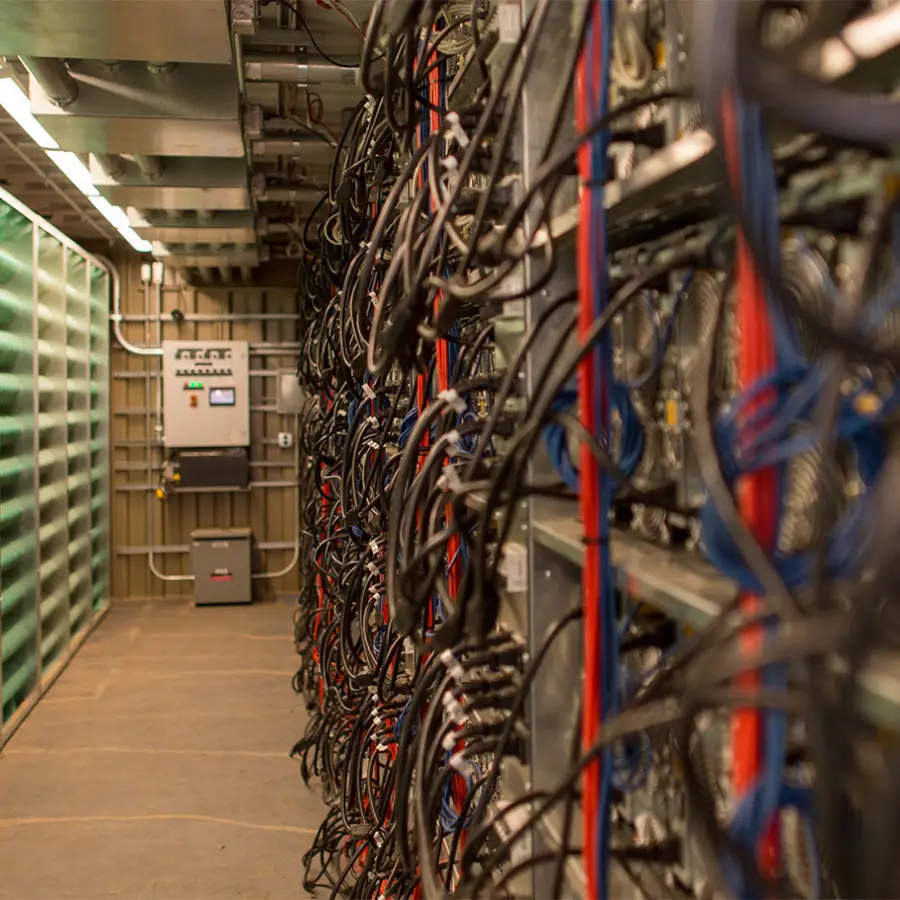Two major challenges associated with greenhouse gas emissions facing the world are derived from two sources: flaring of mined gas and the energy intensive cryptocurrency mining. Natural gas – or mined gas – flaring has been occurring since the beginning of oil production over 160 years ago.

In contrast, bitcoin mining has been an ever-growing environmental concern since its more recent inception about 12 years ago. While the greenhouse gas emissions of flared gas and bitcoin mining are old and new challenges, respectively, two companies have teamed to tackle both challenges with one innovative solution. Crusoe Energy and INNIO Waukesha are using mined gas to power cryptocurrency mining.
Bitcoin’s big environmental impact
Every day, cryptocurrencies are traded, leading to computers racing to complete computations that generate a 64-digit hexadecimal number for each cryptocurrency. These computations go recorded in a public ledger allowing anyone to confirm each transaction. Each computer that solves these computations first receives a payment per transaction that can be as much as US $225,000 at current prices. Each of these transactions require a massive amount of energy.
A crypto mining rig is a basic computer that is equipped with multiple graphics processing units (GPUs) – or graphics cards. GPUs are specialized electronic circuits that are designed to rapidly manipulate and alter memory to accelerate the creation of images in a frame buffer that is intended for output to a display device. GPUs are used in many different embedded systems, such as, mobile phones, personal computers, workstations, game consoles, and more. Each GPU requires a significant amount of electricity to power operations because the GPUs on the mining rigs operate 24 hours a day, 7 days a week, 365 days a year, requiring much more electricity than using a computer for the normal tasks. A single rig with three GPUs requires a minimum of 1000 watts of power when operating. This is about the same as using a medium sized window-based air conditioning unit. Keep in mind that crypto mining businesses maintain hundreds, even thousands of rigs in one location.

Crypto mining rigs not only consume a vast amount of power, but they also generate a vast amount of heat.
Unsurprisingly, the more rigs that are operating, the hotter the environment in which they operate becomes. This means there is a significant requirement for cooling. And, despite the many fans that are integrated into the rigs, there is absolutely a need for external cooling. Enter bigger fans or the much more effective air conditioning units. All of this adds to the total energy consumption. Some analysts estimate that one bitcoin transaction can require:
as much as 1,544 kWh
of electricity
equivalent to about 53 days
of power used in an average home within the United States

Flaring headwinds
around 265 megatons (Mt)
nearly 8 Mt
of methane and black soot and other greenhouse gases being directly emitted into the atmosphere.
Five countries – Russia, Iraq, Iran, the United States and Algeria – accounted for more than half of all volumes flared globally in 2020.
While businesses across the extractive industry have long recognized that capturing associated gases could provide multiple benefits such as surplus energy for consumers, on-site operational power, and increased long-term revenue, it has been more practical to adhere to the industry-recognized justifications that flaring these gases yields them operational and economic advantages. These justifications are now facing serious challenges rooted primarily in environmental headwinds. The industry is in the midst of a tipping point that is shifting communities, regulators, investors, shareholders and the industry itself from tepid tolerance to overt opposition of flaring.
Mitigating the mining
menaces
Crusoe Energy and INNIO Waukesha have collaborated to deploy a new technology that can help not only reduce carbon emissions generated by cryptocurrency mining, but also carbon emissions produced by the flaring of excess gas in the oil and gas industry.
Developed by
Denver-Based
Crusoe Energy Systems
DFM technology has the potential to be deployed across flaring sites to reduce both methane emissions at flaring sites and the environmental impact of bitcoin mining power consumption. DFM technology is expected to lead the oil and gas industry to use a traditionally wasted resource to help reshape their operating landscape and reap the benefits of improved productivity, increased efficiency, and at the same time provide much needed cleaner power for the budding bitcoin mining industry.
Current estimates of the DFM technology maintain 99.9% combustion efficiency for the flared gas. Further, expectations for the future of DFM expect that the technology will also bringing additional benefits in the form of new networking buildout at the data center and mining sites. This industry-changing technology may have the lowest data center operating costs in the world. While there is a cost for users of DFM to support the infrastructure buildout necessary to get the data to customers, those costs are negligible when compared to energy consumption.
DFM is now powering 40
modular data centers fueled
by otherwise wasted and flared natural gas throughout North Dakota, Montana, Wyoming and Colorado.

A future benefit of this networking capacity could be much needed increased connectivity for rural communities surrounding the DFM sites. As the technology continues to gain traction, DFM is expected to expand to 100 units as the Crusoe and INNIO Waukesha expand to new markets, such as, Texas and New Mexico.